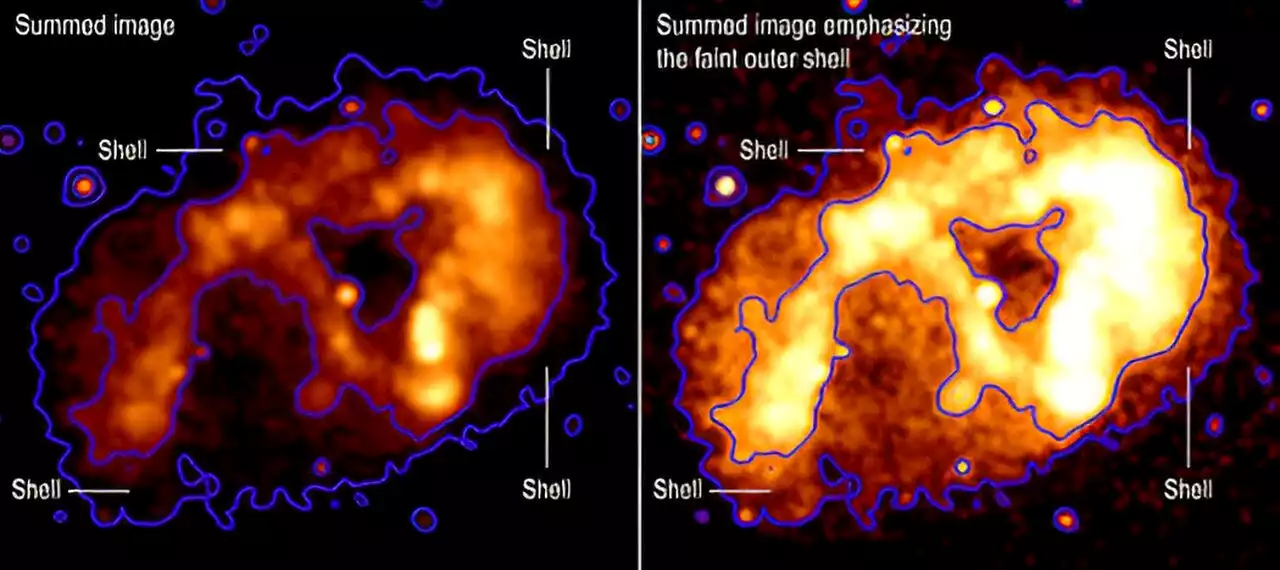Using snapshots taken over 20 years with NASA's Chandra X-ray Observatory, astronomers have learned important new details about an eruption from Eta Carinae witnessed on Earth in the mid-19th century.
Eta Carinae is a system that contains two massive stars . In the middle of the 19th century, Eta Carinae was observed to experience a huge explosion thathave dubbed the"Great Eruption." During this event, Eta Carinae ejected between 10 and 45 times the mass of the sun. This material became a dense pair of spherical clouds of gas, now called the Homunculus Nebula, on opposite sides of the two stars.
Because the newly discovered outer X-ray shell has a similar shape and orientation to the Homunculus Nebula, Corcoran and his colleagues think both structures have a common origin. With XMM-Newton, the researchers saw that the X-ray brightness of Eta Carinae has faded with time, agreeing with previous observations of the system obtained with NASA's Neutron Star Interior Composition Explorer telescope on the International Space Station.
México Últimas Noticias, México Titulares
Similar News:También puedes leer noticias similares a ésta que hemos recopilado de otras fuentes de noticias.
 NASA plans to prove its next Moon landing is real using blockchainNASA and partners Isle of Man and Lonestar are gearing up for the next leg of the Artemis project with plans to set up an off-planet data center that's verified onchain.
NASA plans to prove its next Moon landing is real using blockchainNASA and partners Isle of Man and Lonestar are gearing up for the next leg of the Artemis project with plans to set up an off-planet data center that's verified onchain.
Leer más »
 Chandra Gundlapalli - Forbes Technology CouncilChandra Gundlapalli's stories.
Chandra Gundlapalli - Forbes Technology CouncilChandra Gundlapalli's stories.
Leer más »
 Artemis moon program will prioritize ethics, good of society, NASA saysArtemis 2 includes a diverse crew, and future astronaut missions aim to fly further in that dimension.
Artemis moon program will prioritize ethics, good of society, NASA saysArtemis 2 includes a diverse crew, and future astronaut missions aim to fly further in that dimension.
Leer más »
 The Psyche mission: A visit to a metal asteroidNASA's mission to explore the remains of a dead planet
The Psyche mission: A visit to a metal asteroidNASA's mission to explore the remains of a dead planet
Leer más »
 NASA’s Perseverance Rover Sets New Speed Records on MarsAn impressive trek through a dense boulder field is the latest in a growing list of accomplishments for the six-wheeled rover.
NASA’s Perseverance Rover Sets New Speed Records on MarsAn impressive trek through a dense boulder field is the latest in a growing list of accomplishments for the six-wheeled rover.
Leer más »
